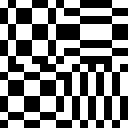A SIMPLE ESSAY.DOC VERSION
🔹💎🔹
︎︎︎︎︎︎︎︎︎︎︎ ︎ ︎︎︎︎︎︎︎︎︎︎︎ ︎ ︎︎︎︎︎︎︎︎︎︎︎ ︎ ︎︎︎︎︎︎︎︎︎︎︎ ︎ ︎︎︎︎︎︎︎︎︎︎︎ ︎ ︎︎︎︎︎︎︎︎︎︎︎ ︎
* ec
🔹💎🔹
︎︎︎︎︎︎︎︎︎︎︎ ︎ ︎︎︎︎︎︎︎︎︎︎︎ ︎ ︎︎︎︎︎︎︎︎︎︎︎ ︎ ︎︎︎︎︎︎︎︎︎︎︎ ︎ ︎︎︎︎︎︎︎︎︎︎︎ ︎ ︎︎︎︎︎︎︎︎︎︎︎ ︎
* ec

INTRODUCTION
The Angel of History,
inspired by Paul Klee’s 1920 monoprint, Angelus Novus,
and conceptualized by Walter Benjamin in 1940,
is a protagonist in my research on the role of resolution
within the realms of image processing.
Benjamin writes:
Her eyes are staring, her mouth is open, her wings are spread.
This is how one pictures the Angel of History.
Her face is turned towards the past, where she perceives a chain of events:
catastrophes piling wreckage upon wreckage.
The Angel would like to stay, awaken the dead, and make whole what has been smashed.
But as the pile of debris before her grows skyward, a storm is blowing from Paradise;
it has caught her wings with violence, propelling her into a future to which her back is turned.
This is the storm we call Progress.*
The Angel of History,
inspired by Paul Klee’s 1920 monoprint, Angelus Novus,
and conceptualized by Walter Benjamin in 1940,
is a protagonist in my research on the role of resolution
within the realms of image processing.
Benjamin writes:
Her eyes are staring, her mouth is open, her wings are spread.
This is how one pictures the Angel of History.
Her face is turned towards the past, where she perceives a chain of events:
catastrophes piling wreckage upon wreckage.
The Angel would like to stay, awaken the dead, and make whole what has been smashed.
But as the pile of debris before her grows skyward, a storm is blowing from Paradise;
it has caught her wings with violence, propelling her into a future to which her back is turned.
This is the storm we call Progress.*
A century after Klee first printed the Angel of History,
image processing technologies have evolved dramatically.
Now, the Angel finds herself traversing a landscape, leaving piles of obsolete technology behind -
signals daisy chained via burned out dongles, slipping in and out of compatibility.
In this environment, default settings corrupt improvements, while trade-offs compromise quality.
This worrisome situation prompts the Angel to compile her experience in Destitute Vision.
*transformed from: Walter Benjamin’s Theses on the Philosophy of History,
Illuminations, trans. Harry Zohn, New York: Schocken Books, 1969: 249.

︎︎︎︎︎︎︎︎︎︎︎ ︎ ︎︎︎︎︎︎︎︎︎︎︎ ︎ ︎︎︎︎︎︎︎︎︎︎︎ ︎ ︎︎︎︎︎︎︎︎︎︎︎ ︎ ︎︎︎︎︎︎︎︎︎︎︎ ︎ ︎︎︎︎︎︎︎︎︎︎︎ ︎







